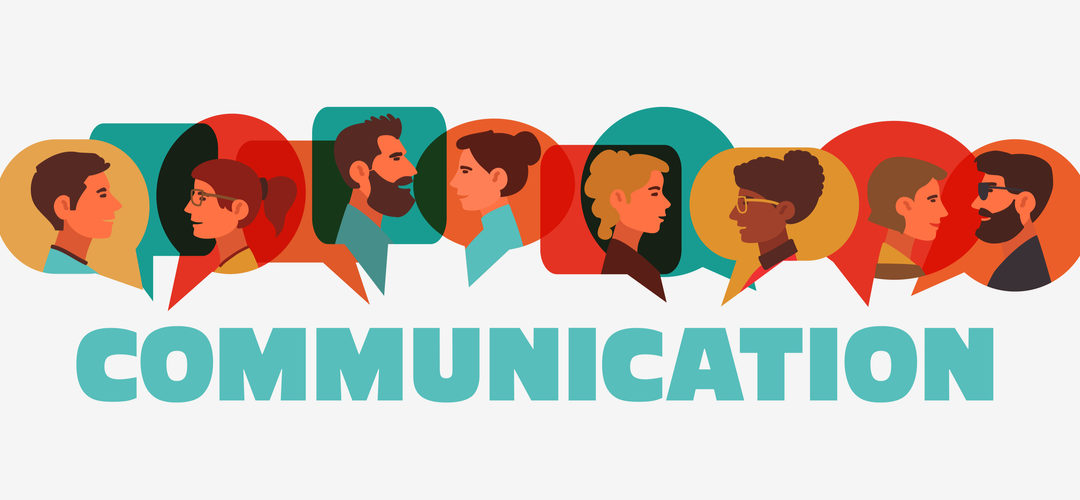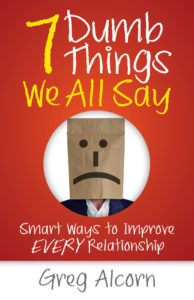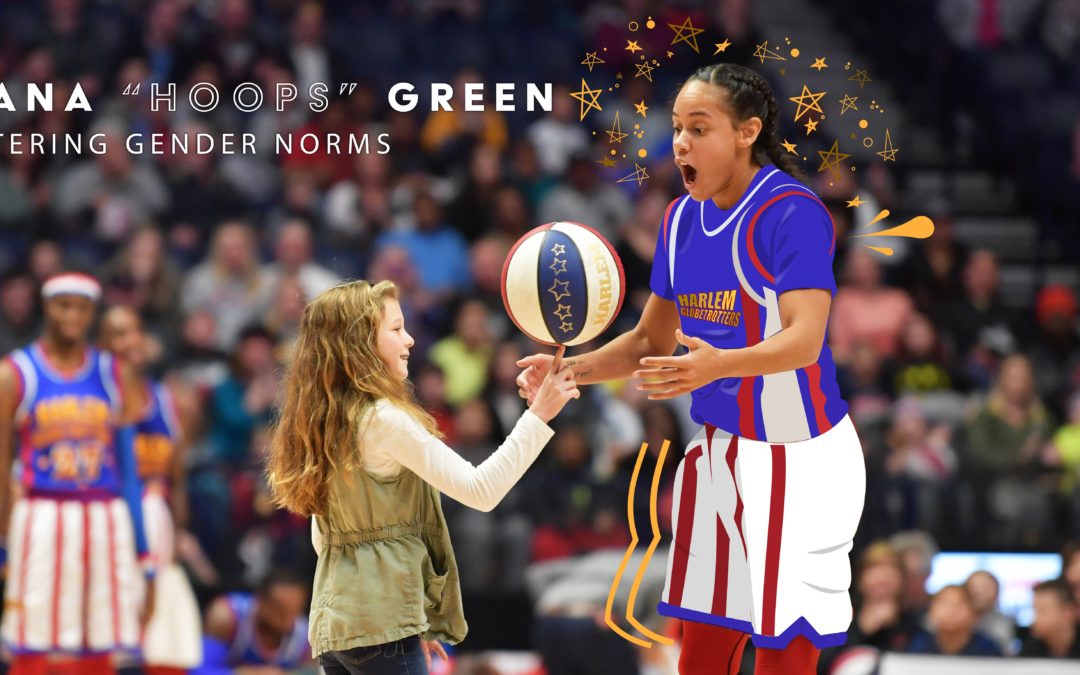
by American Business Women's Association | Jul 17, 2019 | Blog
 Have you ever said something at work you wish you hadn’t? Sometimes the wrong words just blurt out to employees or with the client. The first step in fixing common communication blunders on the job is to know what those blunders are. Then you can say something the smart way and not the dumb way. Verbal communication expert, Greg Alcorn, CEO of Global Contact Services (GCS) of Salisbury, NC, is the author of 7 Dumb Things We All Say and speaks to thousands of people each year on improving verbal communication at work.
Have you ever said something at work you wish you hadn’t? Sometimes the wrong words just blurt out to employees or with the client. The first step in fixing common communication blunders on the job is to know what those blunders are. Then you can say something the smart way and not the dumb way. Verbal communication expert, Greg Alcorn, CEO of Global Contact Services (GCS) of Salisbury, NC, is the author of 7 Dumb Things We All Say and speaks to thousands of people each year on improving verbal communication at work.
BELOW, GREG HAS LISTED THE SEVEN BIGGEST BLUNDERS YOU MAY NOT HAVE USED, BUT HAVE DEFINITELY COME ACROSS!
ONE: Using Bad Bookends. The biggest blunder is starting and ending what you say with the wrong phrasing. Conversation bookends are the small comments or questions just before or right after a full statement or request for action. Be better with your starting and ending bookends. Pre-sentence bookends as a tool can be engaging, demeaning, or distracting. Names are great bookends. Starting a sentence with the name of the person you are talking to warms that person up. “Mary, may I put you on hold?” Saying your name last in your introduction makes it easy for the person you are talking with remember your name. “This is the help line; my name is Jack.”
TWO: Starting with Wrong First Words. Are you familiar with the adage, “Getting off on the wrong foot”? Conversations have first impressions, and they begin with your first three words. Hint: one of the words should be the other person’s name. Using names is important when speaking on the phone, especially conference calls. Conference call principle number one is if you’re going to call on somebody, start with the name. Instead of saying, “What were the metrics on our operations yesterday, Frank?” ask the right way: “Frank, what were the metrics on our operation yesterday?” If you don’t start with the name, you might catch the person by surprise. It certainly catches people’s attention when you say their name first.
THREE: Not Choosing Your Words Well. The words you choose paint a picture for the listener. Your words express your attitude and your personality. Keep it positive. Don’t start a sentence with the word “no.” Even in introductions, you can’t go wrong with saying the person’s name first. A person’s name followed by the four words “I need your help” is a winner. “Rachel, I need your help.” This is especially powerful when it’s in a situation in which you might be the boss and the other person might be a manager, or you might be in a perceived superior position.
FOUR: Poor Questions and Bad Listening. Meaningful questions always stay on subject, keep a conversation moving forward, and ensure the other person feels heard and understood. Becoming a better listener is easier than you might think. It starts by committing to be a great listener and making an active choice to listen. Ask good questions and really listen. This is the “You have two ears and one mouth” principle.
FIVE: Focus-on-Me Attitude. Making it all about you is a turn off for them. This is not a technique; this is an attitude. The best way to describe a benefit is to describe the feeling received. “I came by as soon as I heard you lost the sale; I’m sad.” The fellow employee can recognize the extra effort and surely appreciates the sentiment. It’s a powerful sentence. A special visit, a sense of urgency, and a sincere feeling (sad). Empathy shows feelings.
SIX: Wrong Tone. People feel more comfortable with pleasant, variable tone quality. Voice tone is made up of rate, pitch, and volume. Think tone and don’t drone. The tone of our voice helps others to hear our empathy. The rate, pitch, and volume of our statements of empathy helps express feelings. Usually, but not always, we hear implied empathy when somebody slows down speech and lowers the pitch and volume. Say, “I am sad to hear that you lost the supermarket account,” and I’ll bet you will automatically say it slow and low. The same with excitement at the opposite end of the spectrum. Say “Team, we won the hotel account!” You can’t help but say it fast, high, and loud. Tone expresses empathy.
SEVEN: Not Diffusing Difficult Drama. Stressful conversations, or drama, can be avoided by mastering word selection, listening, and questioning skills. Drama can be inevitable, however. Most stressful situations can be defused when you apply the three Rs: recognize, restate, and reassure. Ask others: “What would you like to see happen?” Those are seven magic words that can defuse difficult drama: Words are just a tool, like electricity is a tool. And like any tool, they can be used for helping or for harming. Electricity can cook a person’s dinner, or it can burn a person’s dinner. Words can turn people on or turn people off.
Here is the bottom line: Nobody wants to say dumb things. But we all do. The first step towards reducing the number of dumb things you say is to know what the dumb things are. Then don’t say that, say something smarter.

by American Business Women's Association | Apr 22, 2019 | Blog
By Lisa Rangel
The executive recruiter calls with a job that sounds as if it was written just for you. The more the recruiter describes the position, the more excited you get. Then she ends the call with, “Great! Send me your resume and I’ll submit it to the company.”
Duh!!!
That’s the moment you realize that you haven’t updated your resume…What do you do?
Here are six actions you can take to update your executive resume pronto:
- Ask the recruiter what are the top three achievements the prospective employer wants the next hire to do. Next be sure you have measurable achievements listed that demonstrate how you either have done these accomplishments already or show how you are positioned to do these wins as next steps in your career. Speak to what the employer needs and what the recruiter says is important in the form of achievement-based bullets in your resume. Here are a few tips to do that include focusing on CAR or STAR formats. CAR stands for Context, Action, Result. The objective is to introduce a problem that you solved by providing the story behind it. STAR (Situation, Task, Action, Result) is similar in so far as you are also telling a story and highlighting how you are the hero in a situation: https://chameleonresumes.com/how-write-achievement-based-executive-resume-bullet/
- Make sure your contact information is updated. Current phone number (mobile) and email. You won’t need to include your physical address to send your resume to a third party recruiter in most cases. Be sure to include your LinkedIn profile vanity URL. Here are instructions on how to create your Vanity LinkedIn URL: https://www.linkedin.com/help/linkedin/answer/87/customizing-your-public-profile-url?lang=en
- Ensure the target position you just discussed with the recruiter is reflected in the title of your resume. Don’t start this summary section with the word “summary” or “objective.” Use the title as the title. This will visually reinforce to the reader that you want to do what they need.
- Freshen up the font. Gravitate towards a font more modern while still conveying an executive feel, such as Calibri or Arial Narrow.
- Update the visual element to your resume. Include subtle touches of color in the form of a separator line between sections. Refrain from using graphs and tables. Keep the layout simple, yet elegant, when doing your resume yourself.
- Employ the use of white space in your resume. Break up blocks of information and use short sentences with numeric- and results-driven content. Know that readers digest reading your resume in 6 second increments, so you want to write digestible morsels to keep them reading and motivated to call.
Ideally, you want to be ready with a resume BEFORE that recruiter call comes. But let’s face it, most of us will do it under pressure after the call comes. So these steps above will have you updating your resume and sending it over to the recruiter in no time! Also, remember companies that specialize in executive resume writing and consulting can be a big help when it comes to updating a resume quickly. You never have to do it alone.
ABOUT LISA RANGEL
Lisa Rangel, Founder and Managing Director of www.ChameleonResumes.com, LLC (a Forbes Top 100 Career Website), is a Certified Professional Resume Writer, Job Landing Consultant & 13-year Recruiter. She’s been featured on CNN Business, Fast Company, Business Insider, Forbes, LinkedIn, CNBC, Time Money, BBC, Newsweek, Crain’s New York, Chicago Tribune, eFinancialCareers, CIO Magazine, Monster, US News & World Report, Good Morning America, Fox Business News, New York Post, and other reputable media outlets.

by American Business Women's Association | Mar 24, 2019 | Blog
Written by Executive Leadership Coach, Denise Louise Jeffrey
Whether pushing for promotion, bargaining for extra budget or trying to convince a client to get on board, negotiation is a necessary part of business life. Most of us aren’t born with this skill, but it’s well worth taking the time to conquer for the benefits that it can bring – from forging better business relationships to reaping great rewards… whatever they may look like for you. With insight from Executive and Leadership Coach Denise Louise Jeffrey, here’s how to influence your way to great negotiations and seal the deal:
BE PREPARED…
One of the most important things to do when negotiating, is to put in the groundwork before anything begins. A common combination, and a vain one at that, is to be overconfident but under-prepared. Always take time to put the research in, and make sure you know what you’re getting yourself into. If you know who you’re meeting, carry out some background research, perhaps familiarizing yourself with their role and career trajectory. Also educate yourself on the project at hand, so that you’re well positioned to address any questions that may arise, and provide answers backed up by cold, hard facts.
BE ATTENTIVE…
Being attentive takes on many types of meaning in negotiations. No matter who you’re up against, always take the time to listen and show that you’re taking on board what they say. This is a two-way street, and there needs to be a mutual respect and understanding for what one another wants from the meeting. But being attentive also means being observant of their behavior, and as Denise suggests, you should use this to negotiate “with an outlook of achieving different outcomes that could be acceptable for all, depending on the style of bargaining your counterpart pursues.” Being able to pay attention to and, recognize their tactics, is key. This leads us onto the final step
BE ADAPTABLE…
As Denise tells us, negotiation isn’t a one-solution situation, and what works for one person may not work for the next. Being able to adapt based on your negotiator’s behavior is a key part in increasing your likelihood of success in the transaction. According to Denise, you can do this through noting their negotiation traits, which have been broken down into four archetypal types: The ‘My Way or the Highway’ type, the ‘Sweet Talker’ type, and the ‘Devil’s in the Details’ type and the ‘Let’s Not Rock the Boat’ type. The key is to then meet them on their level, unless – and this is one exception to the rule – they are being inappropriate or aggressive, in which case, call them out for their unprofessionalism and part ways. Denise’s recommended negotiation approaches are tailored to each category.
Ultimately, the most valuable skill a negotiator can possess is “being able to adapt and negotiate in all styles – not just the one you are most comfortable with.” Being prepared, attentive, altering your behavior based on theirs, and adapting accordingly on the day, is what will give you the highest chance of the best possible outcome.

by American Business Women's Association | Feb 10, 2019 | Blog
By Amanda Peterson, Enlightened Digital
The marketing landscape is nothing near what it was 10 years ago, or even 5. As technology continues to evolve and expand its capabilities, marketing has transformed into an industry that requires constant learning and adaptability. It demands an increased aptitude for technical skills, so it’s vital that marketing professionals hone their technical skill set. TEKsystems Digital reports however, that 95 percent of surveyed marketing leaders have been negatively impacted by the lack of qualified talent.
With technology advancing at rapid speeds, it might seem like there’s a lot to master— but there are also some great ways to get your technical expertise up to speed quickly. Here are four of the top technical skills that marketers need to learn.
1. DATABASE QUERYING
Learning how to run database queries is one of the most important technical skills a marketer today can have, as it enables them to understand how customers and prospects are behaving. Most companies use SQL-based databases, which are used to query, insert, update and modify data. For example, if a marketer wants to know the average transaction value within a certain time frame for a user within a certain demographic, having the ability to perform database queries means they can answer these questions on their own.
Learning to query a database independently means that marketers can consistently understand how their customers are changing and reacting to a product. It allows marketers to make data-driven decisions, make decisions faster and unpack key insights that lead to more efficient and effective marketing.
2. HTML
As digital marketing tactics become more prominent, marketers can benefit from learning some coding basics. HTML provides the structure of a web page and outlines the elements each page will contain. For example, HTML might specify that a web page contains a site title, navigation bar, sidebar and content in the form of page copy or a blogroll.
Whether it be writing blog posts or designing a new product page, many marketing roles involve a great deal of online content creation. Learning HTML will expedite the process of getting that content set up correctly, and looking good. You no longer need to wait for a developer to tweak an email template, format your landing page or make an important update on your website. Even if your role never requires you to write code, being familiar with HTML, at the very least, can make cross-team communication much easier.
3. MOBILE VIDEO PRODUCTION
Online video marketing has grown significantly in 2018, as it’s been popular for both consumers and brands alike. As social media platforms like Instagram, Facebook and YouTube expand their features for livestream and short-form video, many brands have recognized and capitalized on its potential to boost consumer engagement. As Amber van Moessner, Director of Content at Livestream, states, “Audiences spend more time with live video, and are willing to show up, participate, and join the conversation on social media more so than with VOD (video on demand) or blog content.”
Marketers that master video production for mobile platforms can ensure that these videos are as polished and compelling as possible. Learning how to produce this style of content can put brands ahead of their competitors and capture the attention of today’s mobile-focused consumer.
4. SEO
While you don’t have to be an SEO (search engine optimization) professional, it’s important to have a general knowledge about how SEO operates and how it relates to marketing. Organic search results have the potential to be much more powerful than paid ads, especially if they make it to the first page. This is vital for marketers to improve their brand recognition or generate leads. In fact, 57 percent of B2B marketers stated that SEO generates more leads than any other marketing initiative.
Best practices for SEO are constantly evolving, so this is one skill that might require consistent refining through SEO courses. Marketers who do understand SEO best practices however, can create content that increase engagement, site traffic and sales conversions.

by American Business Women's Association | Feb 1, 2019 | Blog
By Leigh Elmore. Leigh is editor-at-large for ABWA’s Women in Business Magazine. He lives and works in Kansas City, MO.
Flashy dribbler for the Harlem Globetrotters takes it to her male competitors. If you play for the Harlem Globetrotters, then you have to have a nickname. Many people “of a certain age” can remember some nicks of the Globetrotters’ past: “Meadowlark” Lemon and Fred “Curly” Neal, for example.
Well, move over guys, because these days the three traveling squads of Harlem Globetrotters boast players with the names such as “Champ” Thompson, “Ice” Hrynko, “Torch” George, “TNT” Lister, “Mighty” Mortimer, “Swish” Young and Briana “Hoops” Green, the seven women currently listed on the Globetrotters’ roster.
Green is the 15th woman to don the red, white and blue Globetrotters uniform, beginning with Lynette Woodard who joined the team in 1985.
“I first saw the Globetrotters when I was seven years old,” Green told ABWA recently. “I didn’t know who they were, but I certainly was entertained and impressed. But, at that young age I already knew that I wanted to play basketball professionally.”
During that time period Green was regularly playing pick-up ball with her older brother and other kids in the neighborhood of her hometown, Lexington, KY. She later went on to star on her high school team, Lexington Catholic, and helped the team garner two state championships on her way to playing college ball at the University of Texas-El Paso. Green would then play professionally in the Czech Republic, Spain and Mexico.
However, in 2017 she felt like she needed a change. “I was trying to figure out if I wanted to continue to play professionally overseas,” said Green. “It just so happened that I posted a video on Facebook of me dribbling, and the video went viral. Everybody was tagging the Globetrotters and how I should be on the team so a recruiter saw it and he invited me to try out.”
And the rest as we say is history. She was invited to join the team where she fills one of the roles as ball-handler and flashy dribbler. Now in her third year with the Globetrotters, she noted that she had played against boys from an early age and, “I played on a lot of co-ed teams,” along the way as well.
“As far as my dribbling ability, I think I can compete with the best of them. The dribbling part always came naturally,” she said. It’s the Globetrotters’ entertaining repertoire of tricks that she needed to practice. “I do have to work on it.”
Since her debut with the Globetrotters, Green has learned a lot from the teammates she calls brothers. Being a Globetrotter is all about providing entertainment—about mixing real, competitive basketball with the signature tricks and routines that fans have come to know and love. At the same time, it’s also about service and using the iconic Globetrotters brand for good.
“We are known for being ambassadors of good will,” she said. “It’s about being good role models for kids.” She says some of her favorite moments are talking to kids after the games. “I’m used to little girls looking up to another girl, but when a younger guy comes up to me and tells me that I’m their favorite basketball player, I’m like, ‘Yeah, we can do this!’” she said.
She and her teammates visit a lot of schools and hospitals as part of the Globetrotters’ goodwill efforts.
The Harlem Globetrotters have always been enthralling and accessible. But, by including female athletes in their engaging routines, they’ve anchored a new demographic: Girls. The women on their active roster have become role models for young women everywhere. While leagues like the Women’s National Basketball Association (WNBA) and the National Collegiate Athletic Association (NCAA) also showcase women’s basketball, playing on the Globetrotters gives Hoops and her female teammates a unique chance to match up against talented male athletes.
“It’s important that everyone knows that women are more than capable of competing at that level,” she said, “not just with basketball, with anything.”

by American Business Women's Association | Jan 31, 2019 | Blog
By Ted Janusz, MBA, CSP. Ted is a Certified Speaking Professional who has delighted audiences for more than 5,000 hours, in 49 of the 50 United States, in Canada from Halifax to Vancouver, in Australia, Mexico, and Puerto Rico. Learn more at www.januspresentations.com.
Do you need to write copy for a brochure or sales letter? I teach a copywriting workshop, so just for fun, I signed on to edit and write brochures and sales letters as a freelancer on Fiverr.com.
And it has been a blast! I have had the enjoyable opportunity to work with fun individuals all over the world, from a health and wellness practitioner in Ireland to a tour operator in Russia.
These professionals know their business, as I am sure that you do, too. But, as we shall soon see, that might actually be a detriment when trying to explain to others what you do. When composing a brochure or sales letter to describe your organization, avoid these four mistakes:
- Being “you” focused rather than “they” focused. Of course, you understand your business, and are anxious to tell others everything about what you do. Guess what? They don’t care! (At least, not yet.) The first thing you need to do is to write text that relates to them. (Notice how I did that from the first sentence in this article.)
- Providing too much detail. With a brochure, provide just enough information so that the future customer will want to contact you to get more details. One of the best ways to do this is to start with a story. And make the story be about them, such as structuring the brochure or sales letter with: Is this happening to you? If so, here is the solution.
- The curse of knowledge. You can be too close to your operation, so you cannot unlearn what you already know. Or the only way you can explain what you do is through the use of intimidating jargon. Use simple English instead. Adults do not like to admit when they do not understand. And a confused mind will never buy.
- Not “chunking” the information. 79% of your prospects and customers, when they go to the Internet, do not read; they scan instead. So for a brochure or sales letter, do not write lengthy prose; use short paragraphs, bullet points, and lots of white space. One of the exercises I have the class participate in is to write a random nine-digit number. Then I ask the class members if they could remember that number a week from now. Most say they could not. But then I ask them to insert a hyphen after the third and the fifth digit. Now, rather than a nine-digit number, they have a Social Security number which only has three “chunks” of information, making it far easier to remember.
If you avoid these four mistakes when composing your brochure or sales letter, you can and will get the results you desire.

 Have you ever said something at work you wish you hadn’t? Sometimes the wrong words just blurt out to employees or with the client. The first step in fixing common communication blunders on the job is to know what those blunders are. Then you can say something the smart way and not the dumb way. Verbal communication expert, Greg Alcorn, CEO of Global Contact Services (GCS) of Salisbury, NC, is the author of 7 Dumb Things We All Say and speaks to thousands of people each year on improving verbal communication at work.
Have you ever said something at work you wish you hadn’t? Sometimes the wrong words just blurt out to employees or with the client. The first step in fixing common communication blunders on the job is to know what those blunders are. Then you can say something the smart way and not the dumb way. Verbal communication expert, Greg Alcorn, CEO of Global Contact Services (GCS) of Salisbury, NC, is the author of 7 Dumb Things We All Say and speaks to thousands of people each year on improving verbal communication at work.







